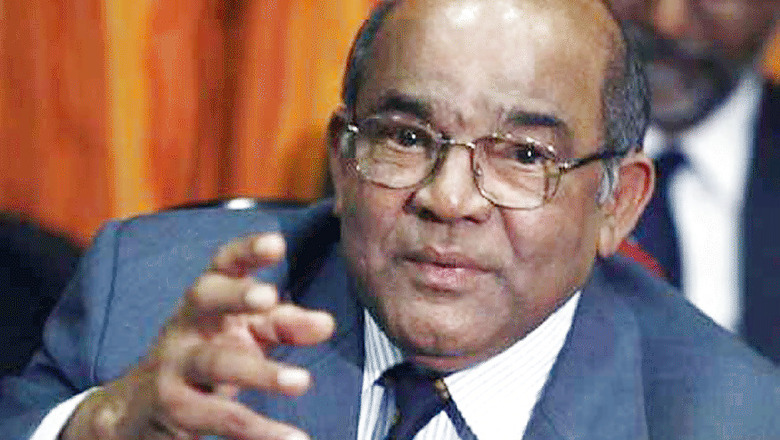
views
Mumbai: Refusing to hazard a guess on GDP growth in the short-term given the "shocks" like GST, note-ban and the mountain of bad loans, former Reserve Bank Governor Y V Reddy has said the economy requires two more years to "consolidate" and claw back to higher growth levels.
It is very difficult to make a forecast on economic growth now or say when the economy will return to the potential growth levels of say 7.5 to 8 percent, which is unlikely in the next 24 months, he said.
"In a shock, the negative element is front-loaded. There will be some moderation, and there can be some gains. The pain is there now, the gains will come later. How much gains and in what gap are the issues," Reddy told a select group of reporters over the weekend.
"My guess is it might take a couple years to consolidate. In a couple of years, we should at least aim to go back to 7.5-8 percent growth," the former central banker said.
"The shock element is tapering off but the positive aspect is yet to come; and I hope it will come." Reddy said the economy was helped by a positive shock for almost three years following the massive drop in crude price, which he underlined was at a third of what it was during his governorship.
However, the negative shocks such as the implementation of the goods and services tax, note-ban last November and also the high quantum of non-performing assets of banks have hurt the growth rate, he said.
Reckless lending in the high growth years during the previous government and certain development in the telecom, power and coal sectors following graft charges created a lot of stress in the corporate world and left many of them over-leveraged. As a result, the bad loans in the system has jumped to almost 15 percent, or over Rs 10 trillion, as of the September quarter.
Reddy, whose conservative approach to regulation is lauded and described as one of the reasons which limited the impact of the 2008 global financial crisis, said the potential output growth has come down to 7 percent now from the 8.5 percent levels pre-crisis.
The decline is due to both international factors, where global economic growth has been declining and also domestic issues like the negative shocks mentioned above, said Reddy, who was chairman of the 14th Finance Commission. Reddy said opinion is divided on how to look at these negative shocks, which he said are looked at by foreigners as "institutional changes".
"All these three shocks, according to some analysts, have permanently affected potential output, whereas some others say it is a (temporary) shock.
"So, the question is how much is a shock? I think there is some element of a shock, some element of permanent improvement can also be there after a lag," Reddy said. Such shocks, the former bureaucrat-turned central banker said, makes the methodology of estimating growth "undependable" in the short-term.
"In the short-term, you don't get all the data. You will say this is a proportion of that. In a way, the methodology for short-term forecasting is only an approximation. And when such a shock has occurred, then the methodology itself is undependable. And therefore, whatever number comes, dont even look at it."
It can be noted that the Reserve Bank is expecting growth on a gross value added basis to shoot up to 7.8 percent by the fourth quarter of this fiscal year, which it feels will pull the yearly growth rate up to 6.7 percent, which was maintained in the December 6 policy review.
Some analysts have said the central bank is too optimistic in its expectations, while some have backed it. "All short-term projections can be subject to more differences of opinions. I am not following short-term forecasting at all; it is not worth it," Reddy said.
The lingering note-ban impact had seen the growth rate plunging to a three-year low of 5.7 per cent in the June quarter but improved to 6.3 per cent in the September quarter. But implementation issues related to GST is still gnawing at the small and medium industries, the impact of this on overall growth will be visible only in the forthcoming quarters.
Policymakers consider any growth rate below 8 percent is below the potential of the economy, whose 1.3 billion people result in a huge domestic market and also its exports penetration. They want to take it up to 8 percent and beyond in the medium-term.




















Comments
0 comment